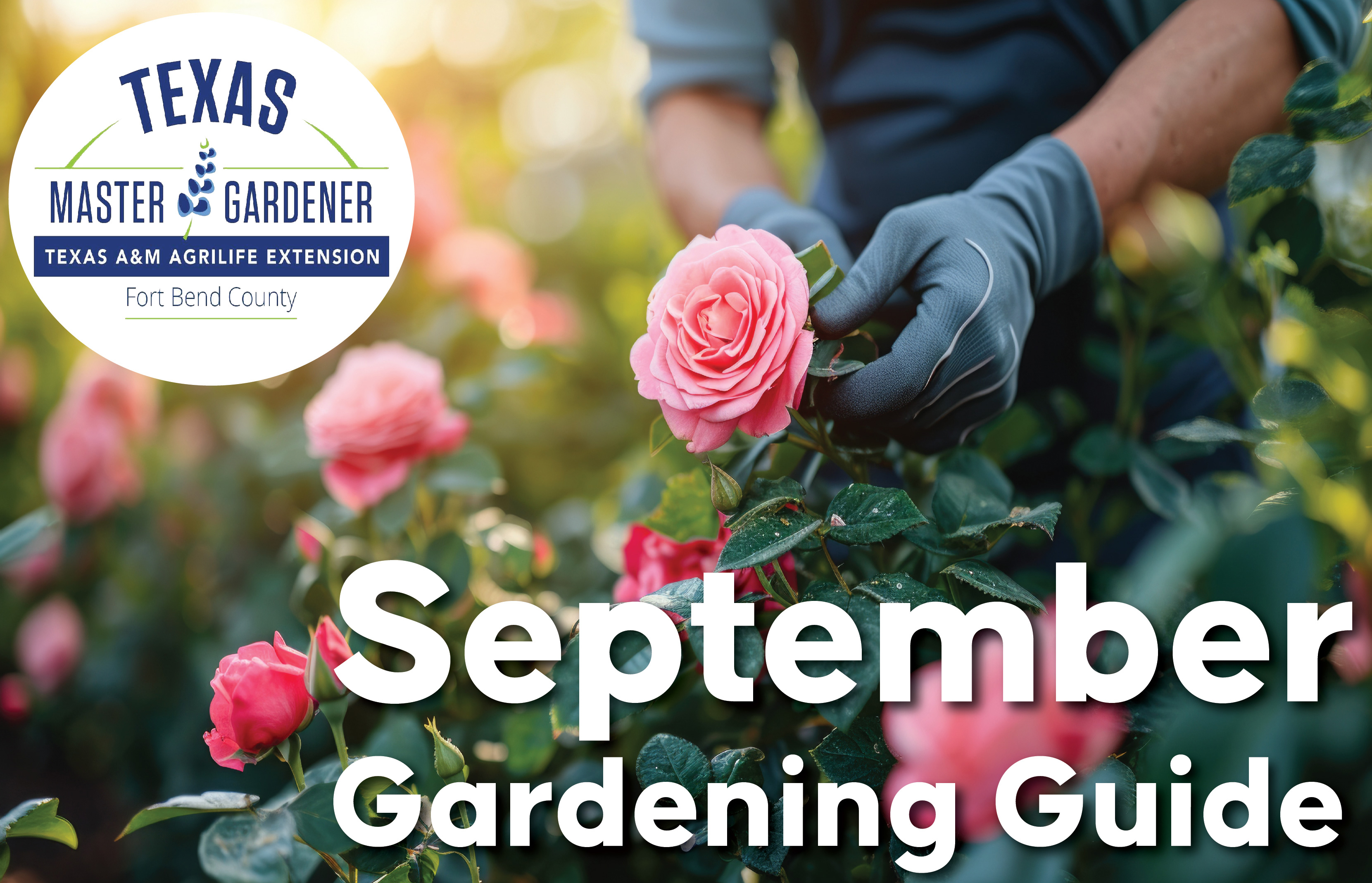
Green Thumbs Up: Fort Bend County Master Gardeners Share Secrets for Thriving Gardens in September
This information has been generously provided to Fort Bend County residents free of charge by the Fort Bend County Master Gardeners, an expert group of trained volunteers assisting Texas A&M AgriLife Extension Service in educating the community using research-based horticultural information.
Did you know that the Fort Bend County Master Gardeners offer free training, events and other resources all year round? To learn more, visit fbmg.org.
Although it might be difficult to feel the difference, fall will begin in September, providing lots of opportunities for gardeners to refresh your gardens. Here are some ideas on things to plant and landscape and garden maintenance items to focus on during the month of September.
-
Hummingbirds are migrating through. Learn which plants attract hummingbirds.
-
Prepare to plant wildflowers next month. Clean out the bed where they will be planted and obtain the seeds you choose to plant. Find reputable places to obtain seeds here.
-
Plant a tree! You will gain some future shade for you and your landscape. Plus, planting trees in fall allows them time to put down roots before the weather gets colder so they will be well grounded for growth in the spring. Learn the Earth-Kind® way to plant a tree.
-
When you plant a tree, placement makes all the difference in the world. Too close and it can cause damage to your foundation. Learn where to place a tree in your landscape for the best results.
-
Plant shrubs and perennial herbs. Just like trees, shrubs and perennial herbs will benefit from the lower temperatures while they put down roots. You can use the same guidelines for planting trees to plant them. For ideas, here are some plants that bloom in the fall.
-
Plant annuals now that will bloom in the spring. This includes larkspur, poppies, and many more that you can find here.
-
Plant ornamental grasses, particularly cool-season grasses such as Inland Sea Oats and Mexican Feathergrass. Grasses add interesting textures to your garden that contrast nicely with other plants and are drought resistant.
-
If you plan to plant cool-season bloomers, you can start them from seed this month. Seeds are widely available at big-box or grocery stores and online. Here are some excellent cool-season choices for this area.
-
You still have time to plant certain vegetables that grow quickly such as radishes and green beans. Radishes can grow from seed to harvest in as little as 3 weeks. You can also plant cool season vegetables. Refer to the Fort Bend County Vegetable Planting Guide for more details.
-
The lower temperatures will reduce the amount of irrigation your yard needs. You should adjust your irrigation system to lay down about one- half inch of water per week if it doesn’t rain. Use this online guide to tell you how much water your yard needs.
-
Fall is when St. Augustine grass is most likely to show symptoms of large patch, a fungal disease that shows as large circular patches of brown turf. Learn more about identifying and treating large patch.
-
September is the peak month for fall webworms. To learn more about this problem, read the article by Fort Bend Extension Agent Boone Holladay.
-
With the weather cooling slightly, now is a good time to fill in bare areas of your lawn. However, before you do, identify the underlying problem and solve it. Then, lay down new sod or seed and make sure it gets adequate water to put down new roots. While roots are being established, if it does not rain, irrigate about one-third inch per day for the first week, then one-third inch every other day for a week, and then about one-half inch twice a week for the next few weeks.
-
Repeat blooming roses can still be trimmed if you did not do it last month. They will also need some extra fertilization this month before they put on their final show for the year. Get more information about rose fall care.
-
Divide your bulbs. Spring-blooming blooms, such as daylilies and bearded iris, will be more vigorous if they are divided when they become crowded. You will get more plants for your garden or some to share with a friend. Watch the video below to learn how to divide your plants.
-
If you have hedges, late September is a good time to shear them before winter. It will be cooler work for you and they will have time to recover before winter weather arrives. Learn the Earth-Kind technique for pruning hedges.
September Color in Fort Bend County
Late September to early October is the ideal time to plant strawberries. Did you know there is a Texas Superstar strawberry? The ‘Festival’ strawberry yields approximately 1.5 pounds of strawberries per plant. It will tolerate freezing conditions but will need protection if the temperatures drop into the low teens.
Other things you might want to know:
- Grow in full sun.
- Grows 8 – 10 inches tall and wide.
- Grows best in raised beds or containers.
- Resistant to downy mildew.
More information about this Texas Superstar can be found here. For more information about Texas Superstar plants, visit texassuperstar.com.
Here are some ideas of what to add to your garden this month.
-
Dwarf pomegranate (Punica granatum var. nana) – This small perennial shrub produces red-orange flowers from spring through fall and can have lovely yellow foliage in the fall. Its small size makes it especially nice for the smaller yards.
-
American Beautyberry (Callicarpa americana) – This woody perennial shrub is a Texas native and is very hardy. In the spring, it has small light purple flowers. Later in the year, it develops purple berries that are attractive to birds. Grow it in part sun.
-
Fall zinnias (Zinnia x marylandica, Zinnia elegans) – This Texas Superstar annual will add lots of color to your fall garden. It is very heat tolerant and blooms in yellows, oranges, and reds. Its small size of 12 – 18 inches will easily allow you to find space for it. Just make sure to plant it in full sun.
-
Fall Aster (Aster oblongifolius) – This evergreen shrub grows to about 3 feet in height and width, has low water requirements, and delicate purple blossoms in the fall. Butterflies love it and deer hate it. What’s not to love!
Want to go deeper? Visit the Fort Bend County Master Gardeners' Article Library for a plethora of information about gardening in your region at fbmg.org/fort-bend-gardening/article-library. Contact the Fort Bend County Master Gardeners help desk at fbmg.org/ask-a-master-gardener for assistance with your horticultural needs.










